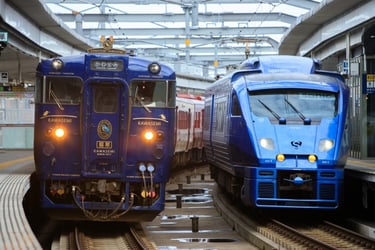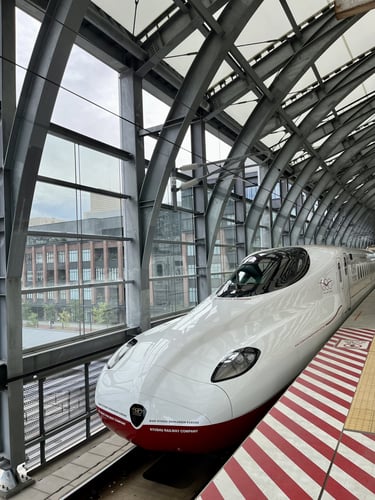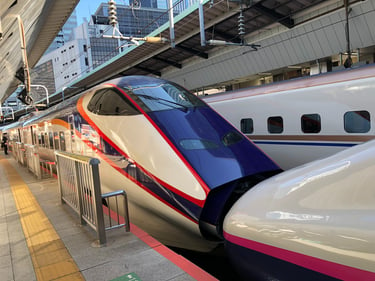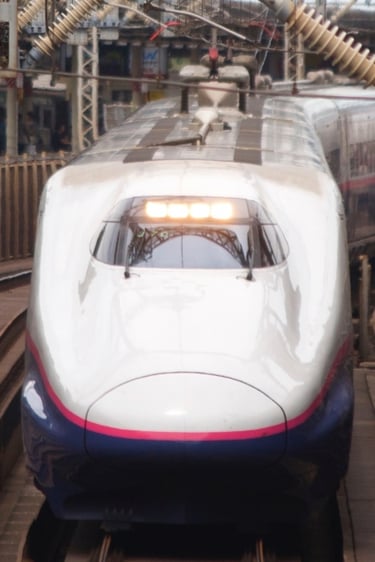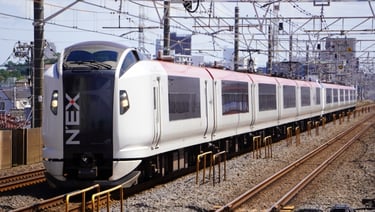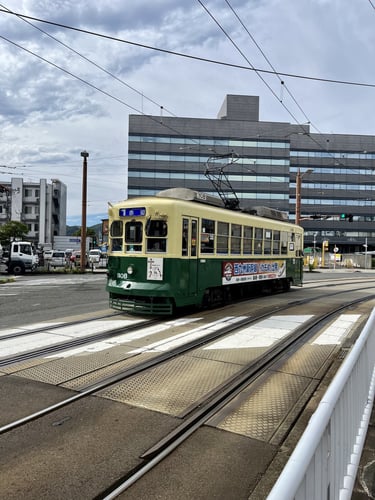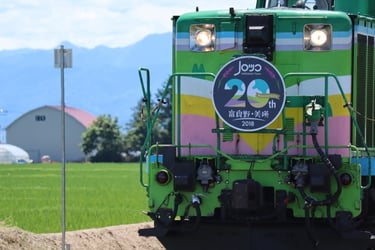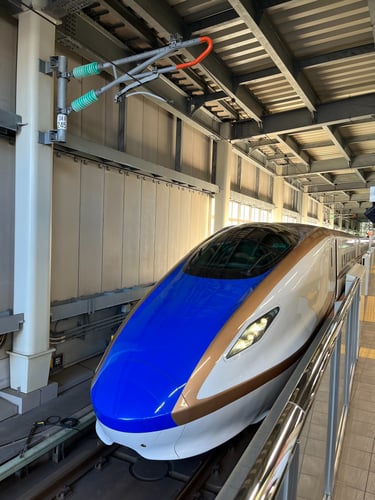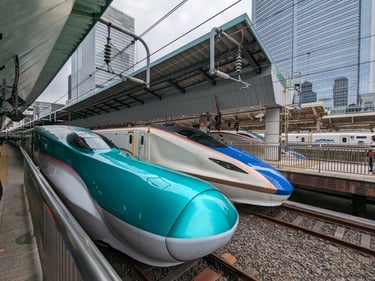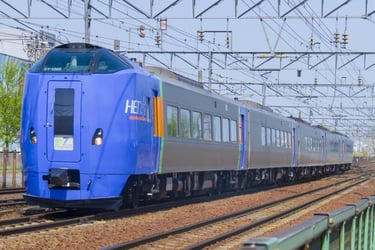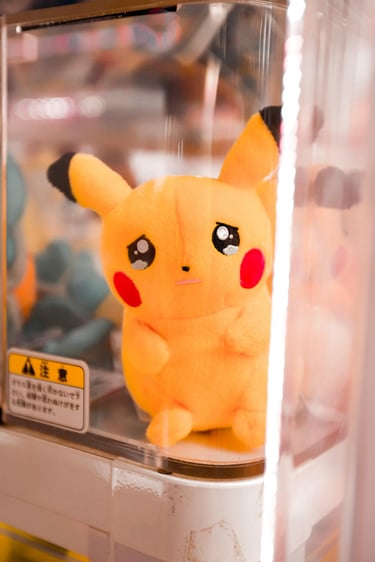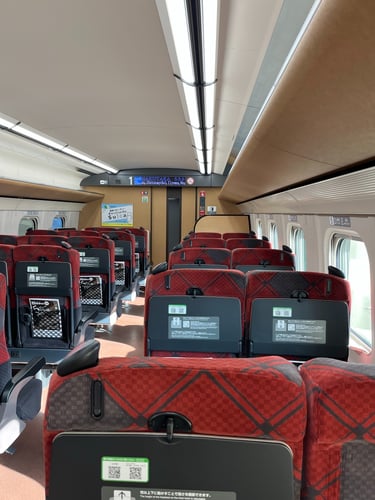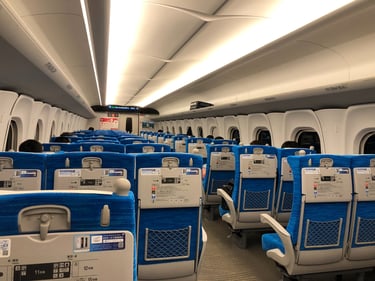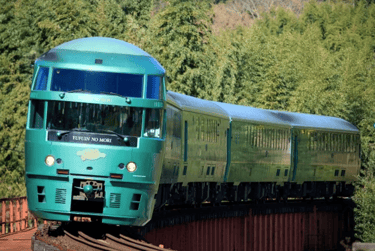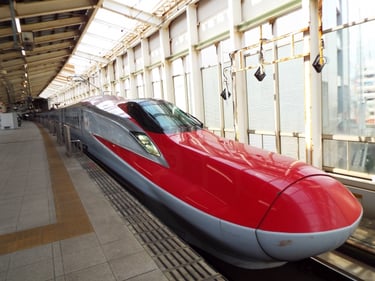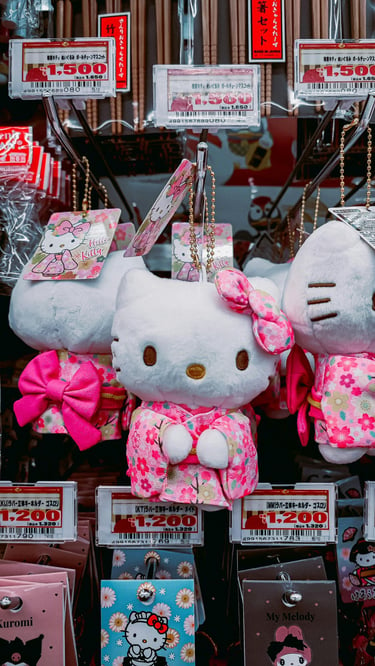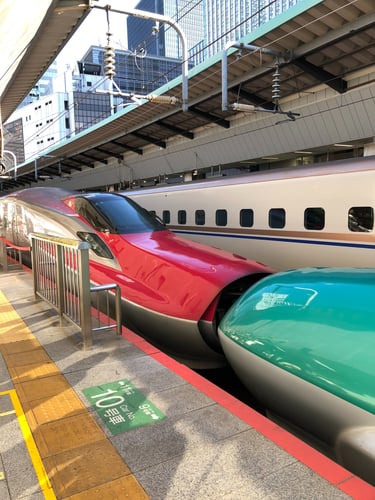Read This Before Traveling to Japan with a Child Under 6: Essential JR Pass Tips and Family Travel Advice
Traveling to Japan with a young child can be an enriching and memorable experience. Japan's efficient transportation system, family-friendly attractions, and welcoming culture make it an ideal destination for families. This guide provides essential information and tips to help you navigate your journey smoothly.
JR REGIONAL PASSBUDGET FRIENDLYJR PASS 7 DAYSJR PASS 14 DAYSTIPS AND SECRETSFAMILY AND KIDS
4/20/20255 min read
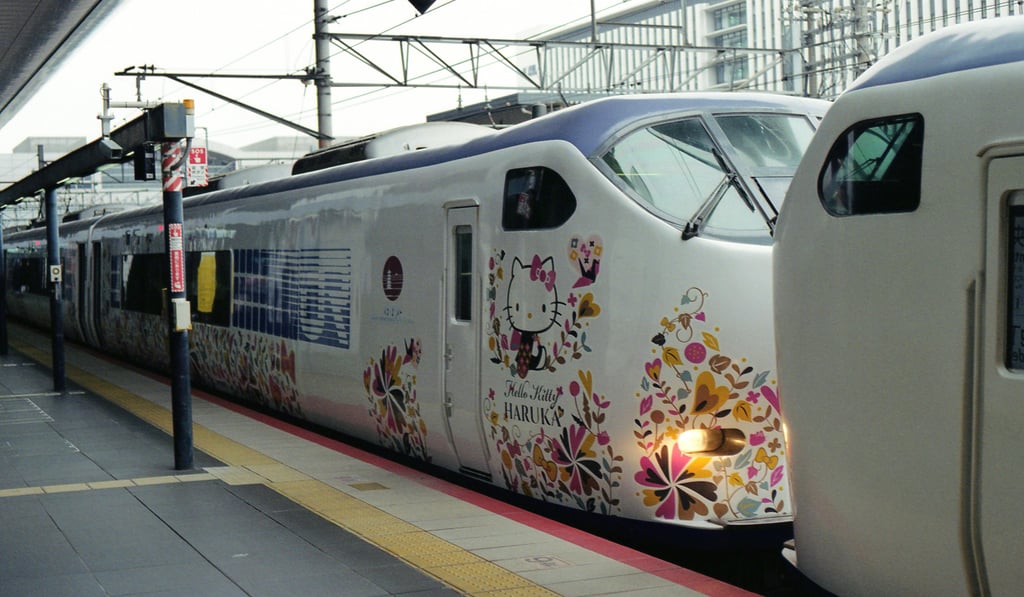

Understanding JR Pass Rules for Children Under 6
The Japan Rail Pass (JR Pass) is a cost-effective way to travel across Japan using the extensive JR train network. For families, it's important to understand how the JR Pass applies to young children:
Free Travel: Children aged 0–5 can travel for free on JR trains when accompanied by an adult with a valid JR Pass.
Seat Reservations: If your child does not occupy a reserved seat, they can travel without a ticket. However, if you prefer your child to have their own seat, you must purchase a child JR Pass at half the adult price.
Limitations: Up to two young children (aged 1–5) can travel for free per accompanying adult. Additional children will require a child ticket.
Looking for a Hotel in Japan?
1. Plan Around Peak Seasons Carefully
Japan is famous for its stunning seasonal changes, but it's important to recognize that the country can get extremely crowded during certain times of the year. Popular periods like the cherry blossom season (late March to early April), Golden Week (late April to early May), and New Year’s holidays (late December to early January) bring a surge of both domestic and international travelers. During these peak seasons, you may experience packed trains, long lines at major attractions, and higher hotel prices.
Traveling with a child during these busy periods can be stressful, as navigating crowded spaces with a stroller or dealing with overstimulation can be challenging for little ones.
Better times to visit:
Late autumn (mid-November to early December): Crisp weather, fewer crowds, and beautiful fall foliage.
Late winter (January to February): Particularly after the New Year holiday rush, many sites are quieter, and accommodation prices tend to drop.
Example:
A November trip to Kyoto's Arashiyama area means enjoying the brilliant autumn leaves without being overwhelmed by crowds, making it much easier to move around with a small child.
Pro Tip:
If you must travel during peak seasons, book your hotels and reserve Shinkansen (bullet train) seats at least one month in advance to secure family-friendly options and seating arrangements.
2. Choose Accommodations That Welcome Families
When traveling with a young child, where you stay can make or break your trip. Japan offers a wide variety of family-friendly accommodations, from modern hotels to traditional inns (ryokans).
Recommended types of lodging:
Business hotels (like Toyoko Inn or Super Hotel): Offer clean, compact rooms with amenities like microwaves and laundry machines. Some provide free breakfast buffets.
Family-style apartments via Airbnb: Great for longer stays, offering kitchens and laundry facilities.
Ryokans: Staying in a tatami room (with futon bedding) gives children more space to move around safely.
Features to look for:
Request Western-style beds if your child tends to fall off futons.
Baby cots or cribs may be available upon request—check ahead.
Some hotels offer kid-friendly amenities like children’s slippers, pajamas, and even storybooks.
Example:
The Hotel Gracery Shinjuku in Tokyo offers family rooms equipped with bunk beds, while ryokans in Hakone often offer private outdoor baths that kids find fascinating.
Pro Tip:
Look for hotels near train stations or convenient locations to minimize walking distances after a long day of sightseeing with your little one.
3. Pack Essentials Thoughtfully (Beyond Just the Basics)
Japan is a land of incredible convenience stores (konbini) and well-stocked pharmacies, but when it comes to traveling with a toddler or young child, having your child's personal essentials on hand can save a lot of stress.
Key items to bring:
Favorite snacks: Especially useful when your child is adjusting to Japanese flavors. Think granola bars, raisins, or crackers.
Reusable water bottle: You’ll find clean water everywhere, and staying hydrated is crucial.
Medications: Japanese pharmacies may not stock familiar brands. Bring fever reducers, allergy meds, and any prescriptions.
Diapers and wipes: Available in Japan, but sizes may vary and some brands differ slightly. Bring enough for the first few days.
Comfort items: Such as a small blanket, plush toy, or even a tablet loaded with favorite shows for long train rides.
Example:
During a trip from Tokyo to Hiroshima (a 4-hour Shinkansen ride), having small finger foods and a tablet with downloaded cartoons kept a 4-year-old entertained and avoided unnecessary meltdowns.
Pro Tip:
Carry a small foldable changing mat, as public changing facilities are available but sometimes minimalistic.
4. Master Transportation with a Child in Tow
Japan’s transportation system is world-class, but when traveling with a small child, a few strategies can make the experience smoother.
Strollers:
Use a compact, lightweight stroller (often called "buggies" in Japan).
Many attractions, like temples and castles, have steps and gravel paths where strollers are impractical—so having a stroller that folds easily is critical.
Some train stations, especially older or rural ones, may lack elevators. Plan ahead by checking station maps on the JR East or Tokyo Metro websites.
Avoid Rush Hours:
Morning rush: 7:30 AM–9:30 AM
Evening rush: 5:00 PM–7:30 PM
Trains can be extremely crowded during these times, even to the point where it's difficult to move.
Seat Reservations:
On long-distance trains like the Shinkansen, reserving seats in advance is highly recommended. JR Pass holders can reserve seats for free.
Request seats at the end of the carriages, where there is extra space for strollers or luggage.
Example:
If you're heading from Osaka to Tokyo, reserve seats in the "Reserved Car" of the Shinkansen Hikari train. These cars are quieter, offer more personal space, and make diaper changes and snack breaks easier.
Pro Tip:
When possible, use limited express trains (like the JR Wide View Hida) that have comfortable seating and reserved spaces for families.
5. Explore Child-Friendly Attractions Across Japan
Japan is wonderfully welcoming to young explorers, offering attractions that delight both children and parents.
Parks and Playgrounds:
Ueno Park (Tokyo): A sprawling park with a zoo, multiple museums, and lots of open space to run around.
Yoyogi Park (Tokyo): Great for weekend picnics and watching street performers.
Museums and Interactive Exhibits:
Ghibli Museum (Mitaka): Magical experience for fans of Studio Ghibli films. Advance reservations required.
Anpanman Children's Museum (Yokohama, Nagoya, Kobe): A colorful, interactive place based on the beloved Japanese children's character.
Theme Parks:
Tokyo Disneyland and DisneySea: Very child-friendly with plenty of stroller parking, nursing rooms, and rides suited for small children.
Osaka’s Universal Studios Japan: Especially fun for kids familiar with Minions and Sesame Street.
Cultural Experiences:
Try a simple kimono dress-up experience (available even for children).
Attend a tea ceremony geared toward families, where kids can learn to appreciate Japanese tradition in a hands-on way.
Example:
In Kyoto, visiting the Kyoto Railway Museum is a huge hit for train-loving kids, with interactive exhibits, real steam locomotives, and rideable miniature trains.
Pro Tip:
Always check if attractions offer family discounts or stroller rentals. Many museums and parks are surprisingly accommodating!
Final Thoughts
Traveling in Japan with a child under 6 is not only feasible but can be a delightful experience with proper planning. Understanding the nuances of the JR Pass, preparing for the journey, and choosing child-friendly activities will contribute to a memorable family adventure.
If you need assistance planning your itinerary or have further questions about traveling in Japan with children, feel free to ask!
